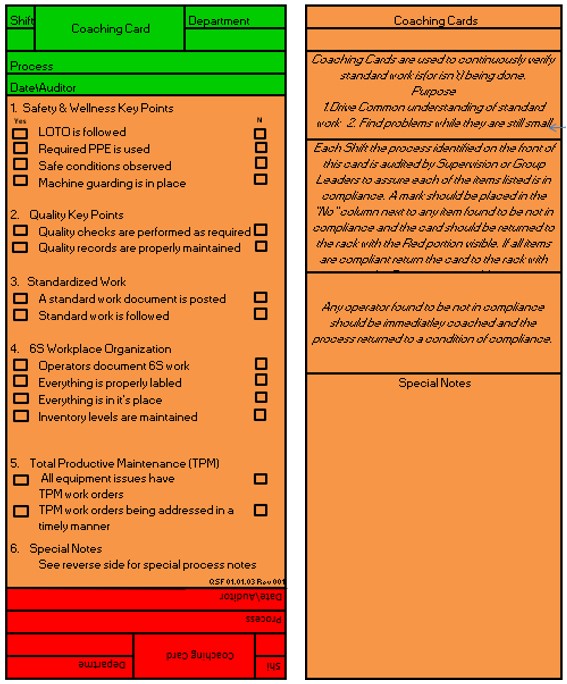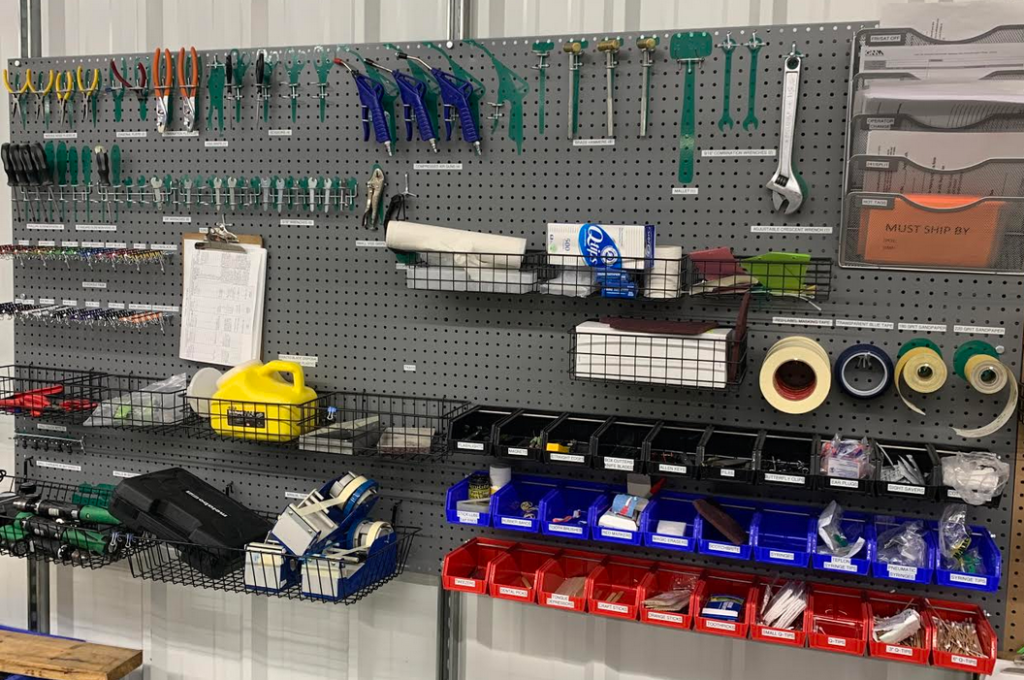If you read my book the Lean Game Plan, you know that I talk about having the lean basics in place- Inventory accuracy, Bill of Material accuracy and 6S before getting more sophisticated. I want to talk about 6S in this blog.
You often see 5S, 5S +1, 6S and even 7S which all refer to the same technique. In a nutshell, it is a cleaning and organizing method. The old saying “a place for everything and everything in its place” is key to 6S.
Let’s go through the different S’s.
1. Sort
Just as it sounds, you go into an area and sort through everything in that area. Anything that’s broken, doesn’t belong, or is questionable is removed from the area and a red tag is placed on that item. Items with red tags are taken to a red tag holding area.
The purpose of the red tag holding area is for other departments in the facility to see if there are items that they can use. Sometimes an item may be on the books as having a lot of value. We need to get approval from accounting on how to disposition that item.
I learned from personal experience how important it is not to skip the red tag step. I was working with an electronics company in Irvine, CA and someone held up a small bag of gold-colored springs. No one on the team knew what they were, so we just threw them away instead of putting them in the red tag holding area as we should have. About an hour later, the production control person asked us if we had a bag of gold springs worth about $3,000. I went dumpster diving to find the springs. I learned a valuable lesson that day regarding following the process and not skipping any steps in a 6S effort.
2. Shine
After we clear out the area, we need to clean the area and equipment that will remain in the area. We want to ensure that the equipment is in good working order before we put it back. This is a great time to conduct preventive maintenance. If parts need to be ordered for a piece of equipment, place it in the red tag holding area marked “hold for maintenance” until the replacement parts come in. After you replace the parts in the equipment, you can put it in its defined location.
3. Set-In-Place
This is where the saying, “a place for everything and everything in its place” comes in. After we have cleaned the area, we want to put back only what we need. Decisions need to be made about locations of equipment, storage of tools, materials, etc. Locations for incoming and outgoing materials need to be marked on the floor. An area for cleaning supplies needs to be established and filled with cleaning supplies.
If you keep tools in toolbox drawers, buy toolbox foam and cut out the shape of the tools. This makes it easy to know where tools need to be put back and shows when any are missing.
We can use the same principle for tools that hang on pegboard. You can draw the outline of the tool on the pegboard so you know where to return it and you visually know if it is missing. We call these shadow boards.

4. Standardize
This is where you standardize the communication and the daily 6S activities that occur on each shift. If you have multiple shifts, it is beneficial to Identify what each shift will do and alternate their activities each day or week. By alternating activities, no shift can claim they always are the ones that have to sweep, etc. Deploy standard communication boards across areas. This ensures each area receives the same communication and information.
5. Sustain
As I’m sure you can guess, this is the hardest of the 6 S’s. Some companies conduct audits, although I think audits are subjective. I like to deploy small elements of standard work called coaching cards.
Coaching cards have a red and green end. They ensure team members in an area conduct their 6S activities every day. If they complete the work and it is satisfactory to the supervisor, the green end is displayed. If they didn’t meet expectations, the red end is displayed and is an opportunity to conduct coaching. Regardless, it is a quick, visual tool to let everyone know the status of the area.

6. Safety
If we conduct the first five S’s well, then the safety of the organization improves. 6S should be a focus for the business. We want employees to go home every night in the same way they came to work- SAFE.
7. Security
This is the 7th S. Depending upon what you do as a business, this can become a key element to your survival. Even if you are not a Defense contractor or a tech firm, it is an element that you should pay special attention to.
The 6S’s are important as you begin your Lean journey. I refer to them as a Lean 101 basic. It needs to be in place or in progress before moving on to more advanced Lean methods.
As always, it is an honor to serve you and I hope that you and your company are getting better every day!
Follow me on Twitter
Join me on LinkedIn
Listen to the podcast here

